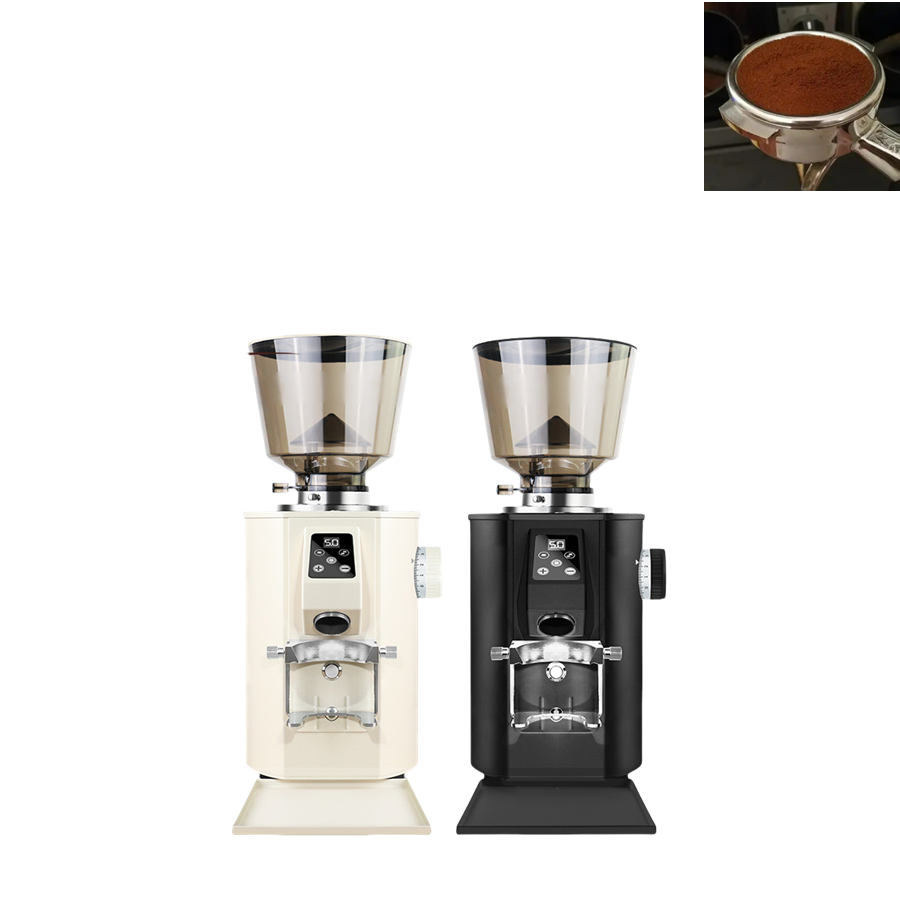The adjustment of the particle size of an American coffee grinder is a crucial step in making high-quality American coffee, directly affecting the extraction efficiency and taste performance of the coffee. The following analysis is carried out from the dimensions of adjustment principle, method, precautions and equipment compatibility:
First, the influence of particle size on Americano coffee
Extraction efficiency
Fine grinding: The surface area of the particles is large, the resistance to water flow is high, and the extraction efficiency is high, but it is prone to over-extraction (with prominent bitterness).
Coarse grinding: The surface area of the particles is small, water flows through quickly, and the extraction is insufficient (with a distinct sour taste and a weak flavor).
Balanced taste
American coffee needs to balance the three flavors of sourness, sweetness and bitterness. The adjustment of coarseness and fineness needs to be coordinated with the brewing time and water temperature, for example:
Fine grinding: Suitable for short periods (such as 2-3 minutes) of drip filtration, avoid over-extraction.
Coarse grinding: It is necessary to extend the brewing time (such as 4-5 minutes) or increase the water temperature to enhance the extraction rate.
Second, adjustment methods and steps
1. Confirm the type of grinding machine
Cutter head type grinders (such as hand-craned bean grinders, electric conical knife machines) : Adjust the gap by rotating the adjusting ring or replacing the cutter head.
Ghost tooth/flat knife grinding machine: The distance between the knife discs needs to be controlled through a dial or fine-tuning screws.
2. Adjustment steps
Initial calibration
Refer to the equipment manual and adjust the grinding degree to the “medium coarse” setting (such as near “5” on the dial).
It is recommended to test with 50 grams of coffee beans for the first use to avoid waste.
Trial grinding and testing
Grind 10 grams of coffee powder and observe the particle distribution:
Too fine: powder-like, feels like flour, and is prone to clumping.
Too coarse: Granular, similar to coarse granulated sugar, with strong fluidity.
Ideal state: Uniform particles, similar to sea salt or fine granulated sugar.
Extraction verification
Use the filter paper drip filtration method, fix the powder amount (such as 15 grams) and water temperature (90-94℃), and adjust the brewing time to 3-4 minutes.
Taste the texture:
Bitterness: The grinding is too fine and needs to be coarser.
Sour and astringent/bland: The grinding is too coarse and needs to be refined.
Fine-tuning and optimization
Each adjustment should be made in units of 0.5 to 1 scale (depending on the precision of the equipment) to avoid excessive amplitude causing extraction imbalance.
Record the extraction time and taste changes after each adjustment, and gradually approach the optimal grinding degree.
Third, precautions
Equipment cleaning
The accumulation of residual powder can lead to uneven grinding. It is necessary to clean the cutter head and powder bin regularly to prevent the mixture of new and old powder from affecting the taste.
Environmental factors
Humidity: In a high-humidity environment, coffee beans are prone to absorbing moisture and becoming soft. During grinding, they may form lumps. It is necessary to appropriately adjust the grinding degree or reduce the amount of powder.
Temperature: Low temperatures may cause coffee beans to become brittle and produce fine powder during grinding. Adjustments should be made according to the season.
Equipment differences
Electric bean grinder: Give priority to choosing conical knives or toothed knife discs to reduce the fine powder rate and improve uniformity.
Hand-cranked bean grinder: It is necessary to ensure that the force of the crank is consistent to avoid uneven thickness due to uneven rotational speed.
Fourth, Summary
The adjustment of the particle fineness of an American coffee grinder needs to be comprehensively adjusted in combination with the characteristics of the equipment, the characteristics of the coffee beans and the brewing parameters. Through trial grinding, recording and iterative optimization, a balance between extraction efficiency and taste can be achieved. It is recommended that users regularly calibrate the equipment, clean the cutter head, and flexibly adjust the grinding degree according to environmental changes (such as humidity and temperature) to ensure the stability of each cup of coffee.


